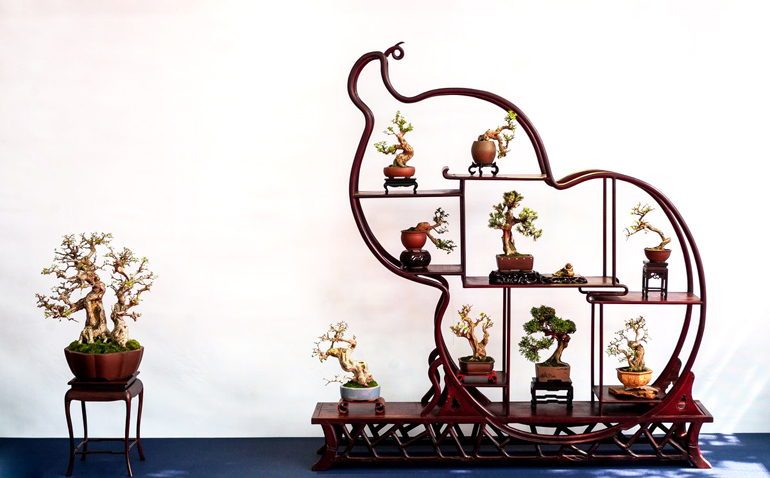
Winter or early spring (it looks like there might be some leaves starting to push, but it’s hard to tell). Two things that jumped out when I first saw this photo are, the rather unusual shape of the stand and the shear number of trees in the display. No companions, no figurines, no stones (well, maybe one small one in the middle) and not much internal space either (though there is plenty of space around the whole display). Just nine mini bonsai and one very well chosen larger tree.
The photos shown here were taken by Morten Albek at the 2nd Mini-bonsai Exhibition at the Changzhou Qinxin Garden in China.
In case you don’t know him, Morten is the author of Shohin, Majesty in Miniature. He is also a Shohin bonsai artist, teacher, blogger and shohin spokesperson, as well as a top notch photographer.
Here’s some of what Morten has to say about this trip: “The 2nd Mini-bonsai exhibition September 2014 in Changzhou Qinxin Garden was an experience and a surprise to me. I had not expected something like this when I was invited to China to be part of this event….
…Mini-bonsai has a different perspective than normal larger bonsai. Where large bonsai are displayed by themselves to show the beauty, strength and elegance of the tree, Mini-bonsai are focused on showing the beauty of the season too. This is done by displaying two or several trees together in a harmonious display, where flowering trees are important in summer, fruit bearing trees in autumn…” You can read the rest and see all of Morten’s photos on his blog.
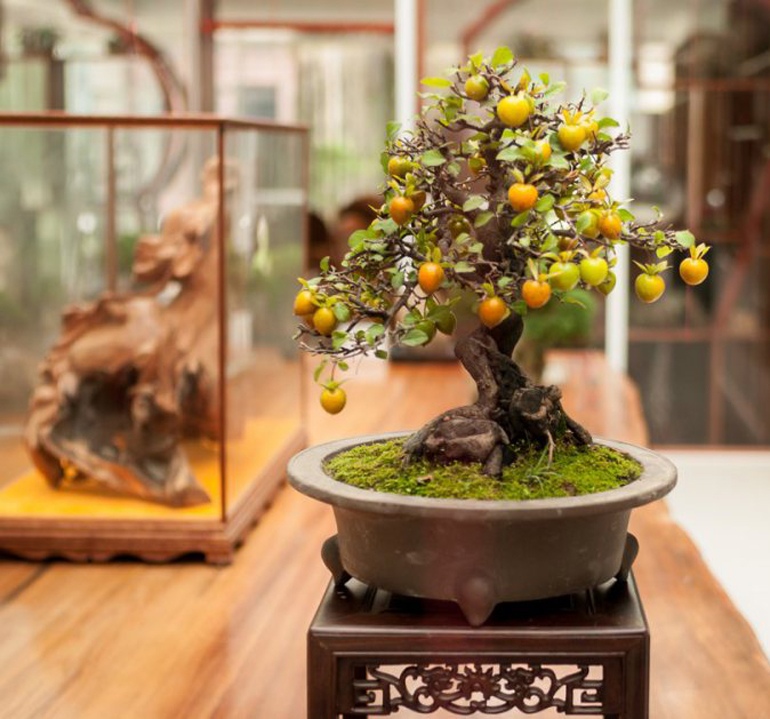
This sweet little tree just standing alone looks like late summer with some fruit still to ripen. At first I thought this might be a Kumquat tree, but now I’m leaning toward dwarf Persimmon.
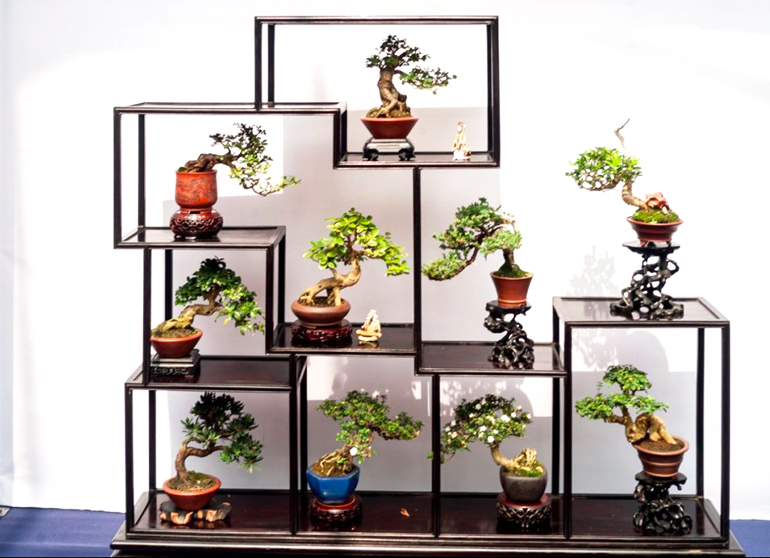
Late spring or summer. Another somewhat crowded but quite striking ten tree display. No concern about even numbers here (or is the little figurine in the middle the 11th element?).
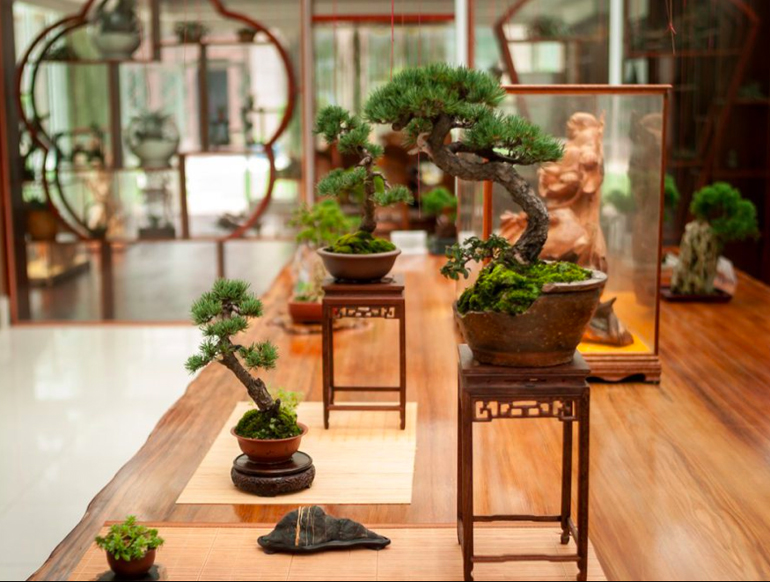
Summer? You’ll find this kind of unusual perspective and rich tones in many of Morten’s photos.
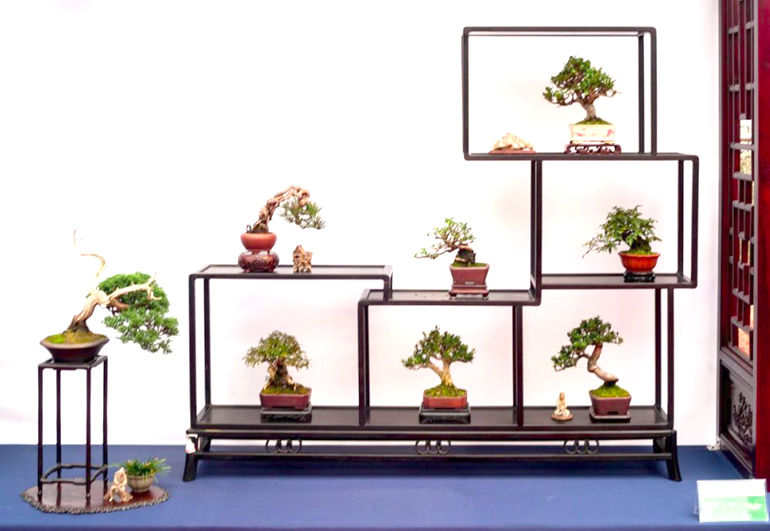
Spring or summer? Seven little trees plus one larger tree (plus one companion, three figurines and one stone).
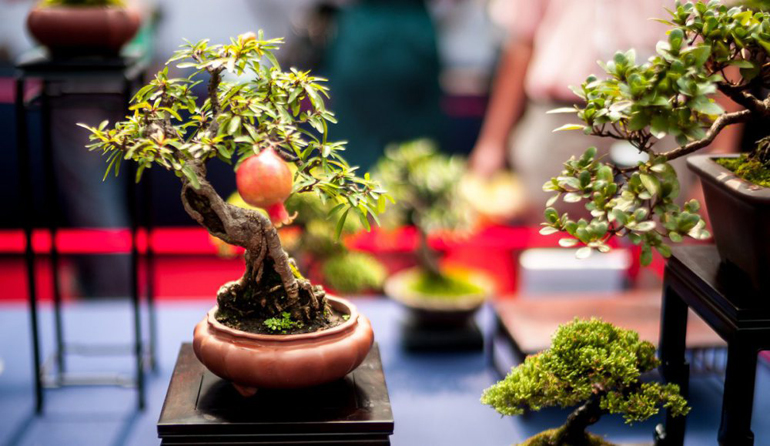
Late summer or fall. It’s the single large fruit that gives it away. It looks like it might be a pomegranate and the tree looks like a Ficus neriifolia. I must be missing something.
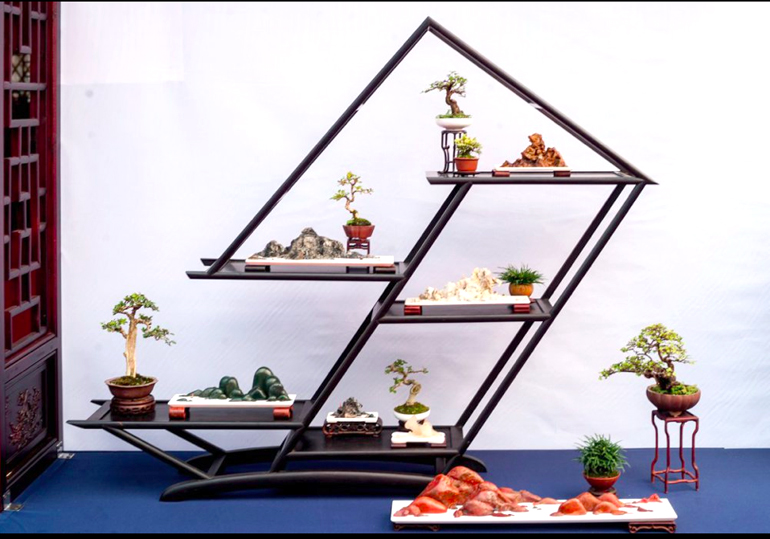
Spring? Looks like maybe the leaves are still coming out. Another unusual stand with some unusual elements as well.
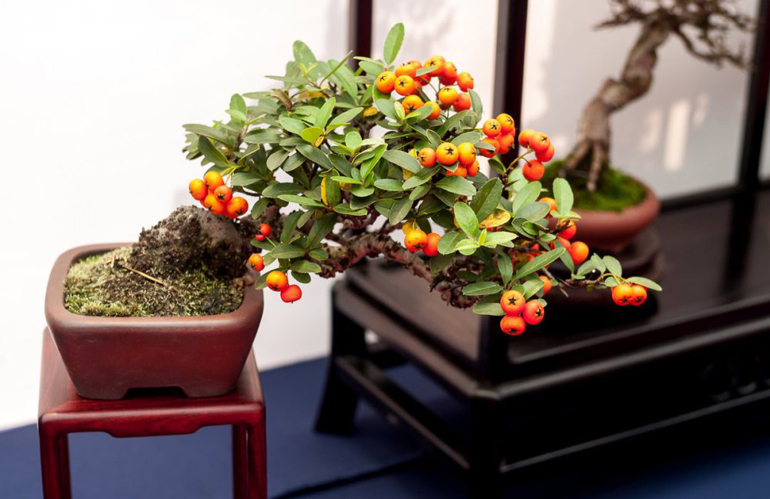
Late summer or fall again. Pyracantha’s are native to Asia and Europe, though due to the beauty of their berries and their hardiness, you see them all over North America (except here in northern Vermont, where winters are just a little too cold).
A few comments to add to these displays are that all are from the same exhibition in late summer (September). The trees in this exhibition shows the flowers and fruits from this season. What can mistakenly be perceived as some trees are showing winter other seasons, which they are not because it is late summer, are trees defoliated. Some bonsai artists in some eastern countries has a habit of defoliating trees for a show, even in summer, to show the full beauty of the branches, not letting leaves covering the view of twigs and branches. This is of course not clearly showing the beauty of the season, but this is a cultural related thing that the Chinese prefers. Still being young at the Shohin scene, this might change. Or not.
Also the aesthetics of the displays are somewhat different from what we see in Japan, and what is usually shown in the west.
Thanks for clarifying Morten. Fall defoliation!